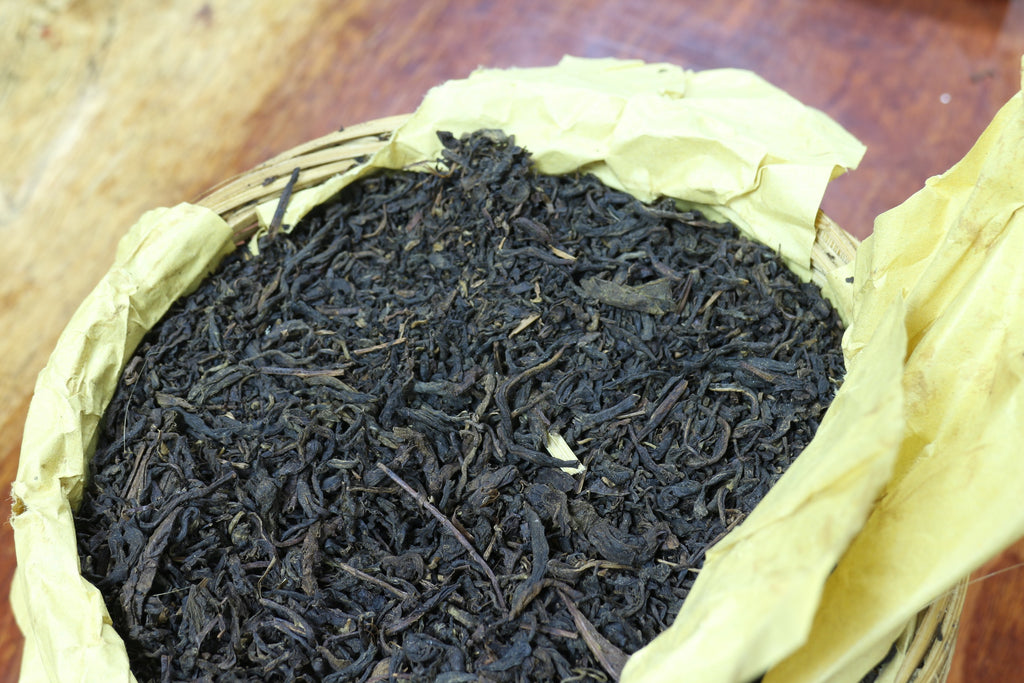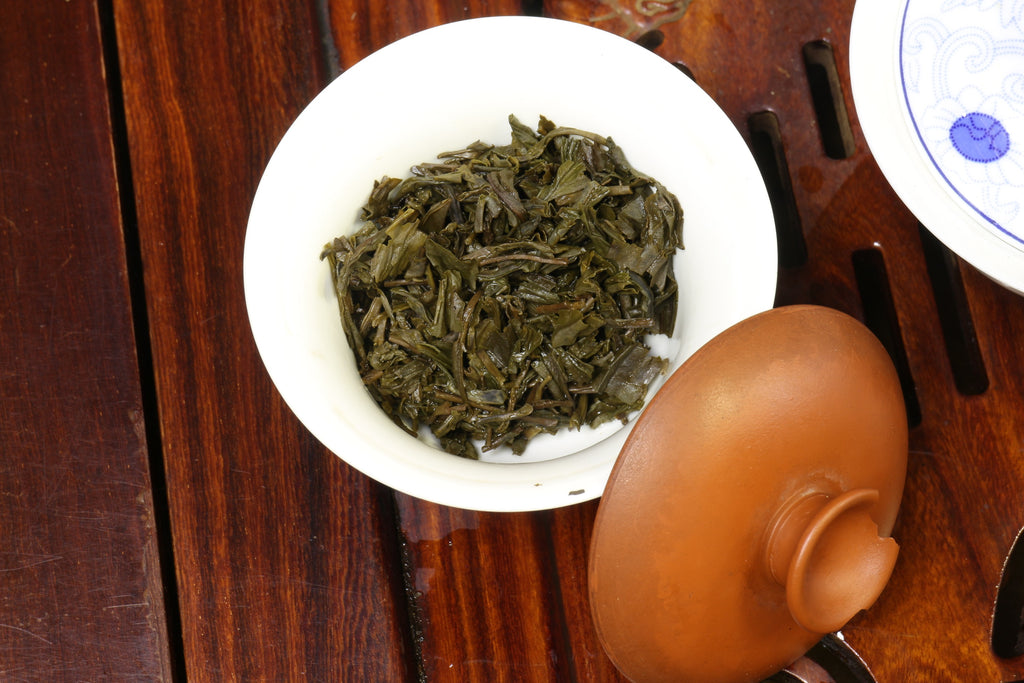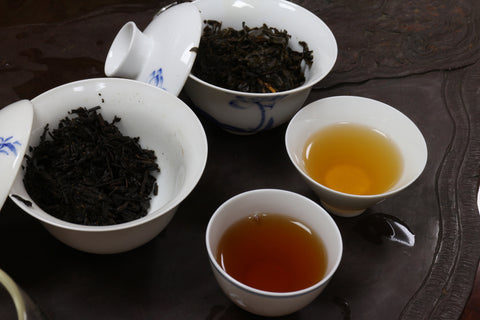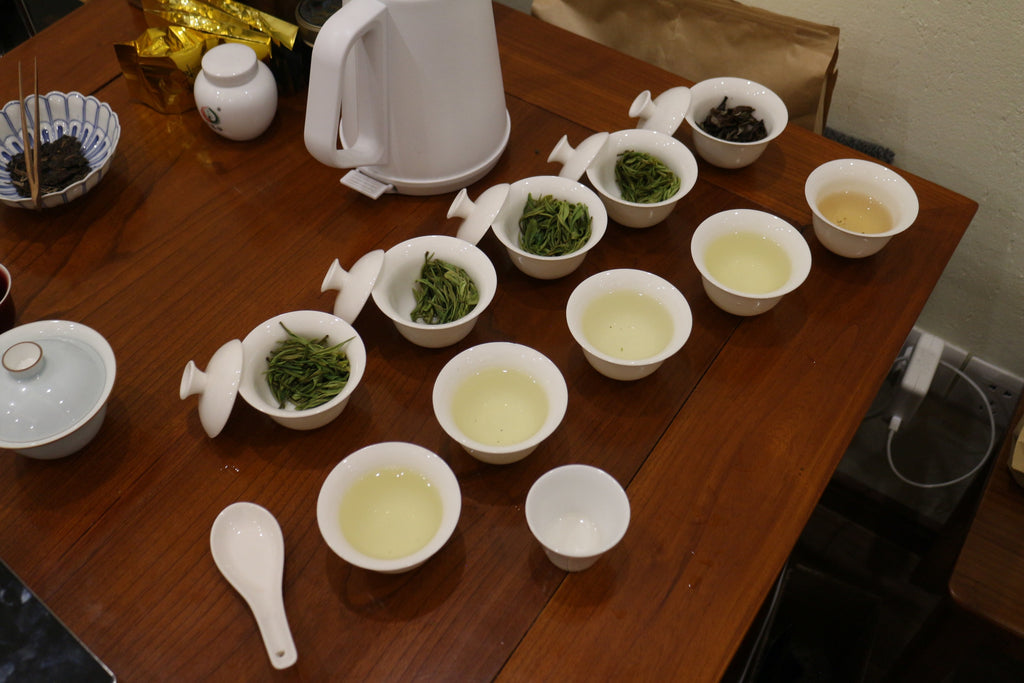In Search of Hei Cha in the South of China
Guangzhou, 27 April 2018
I spend the last day in Guangzhou entirely in the Fangcun market. Spencer returned home two days ago, leaving me without an interpreter; I will have to get by with my primitive Chinese.
Returning to the shop I visited with Dave; I try the 2000 Bingdao again, but the impression it makes is different than that of two days ago; it looks like a different tea—and perhaps it is.
I let the Pu'er go and concentrate on other Hei Chas. I visit two shops recommended by Dave; this time, he has directed me well. I purchase various Hei Chas from Hunan (Fu Zhuan with and without yellow fungus, Qian Liang Cha), a Liubao from 2009, and some baskets of Lu'an Hei Cha.


Above: Liubao on the right, basket of Lu'an Hei Cha on the left.
Below, left: brewed leaves of Lu'an, relatively pale; I preferred this to the darker version, which, in my opinion, had a less multifaceted taste.
Below, right: comparing two Fu Zhuan; the lighter infusion, with the golden-yellow colour, is the tea with the Jinhua fungus.
One last whim, before I leave the city: I go back to the first shop I visited two days ago and bought a tiny Bing Cha, 200g, the first Pu'er I drank in Fangzun (a Gua Feng Zhai Sheng from 2017). The price is stratospheric, but I know that I would regret not taking it home with me.
I will spend the next four days in Shanghai, packing tea and accessories, and tasting different teas, ordered from various sources during the trip.
Tasting of Anji Bai Cha from two producers. It is an extremely delicate tea, the differences not alway easily perceptible. So I use a white tea, the last one in the back, as a 'palate cleanser'.
Before three tastings of Yingde Hong Cha. With the first, I choose the best among the samples collected at Fangcun; with the last, I compare the best from Fangcun against the one sent to me from the company with organic cultivations.
Written by Gabriele









